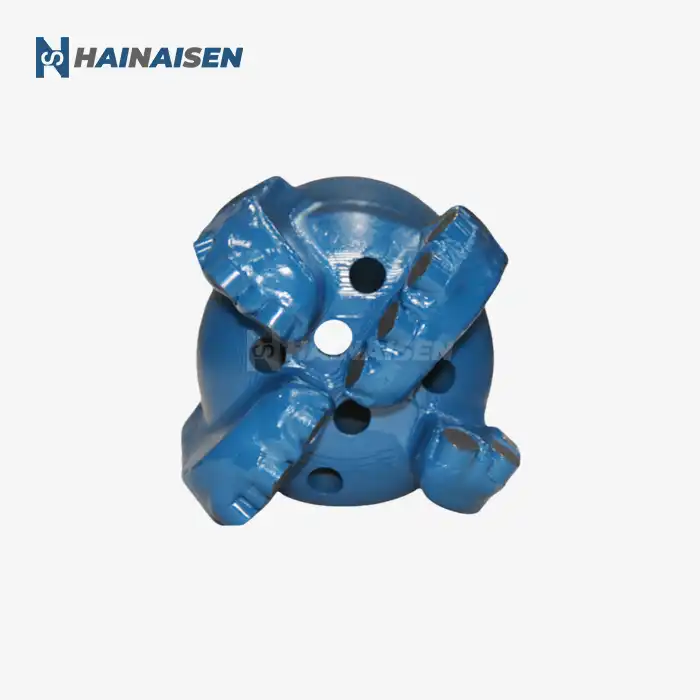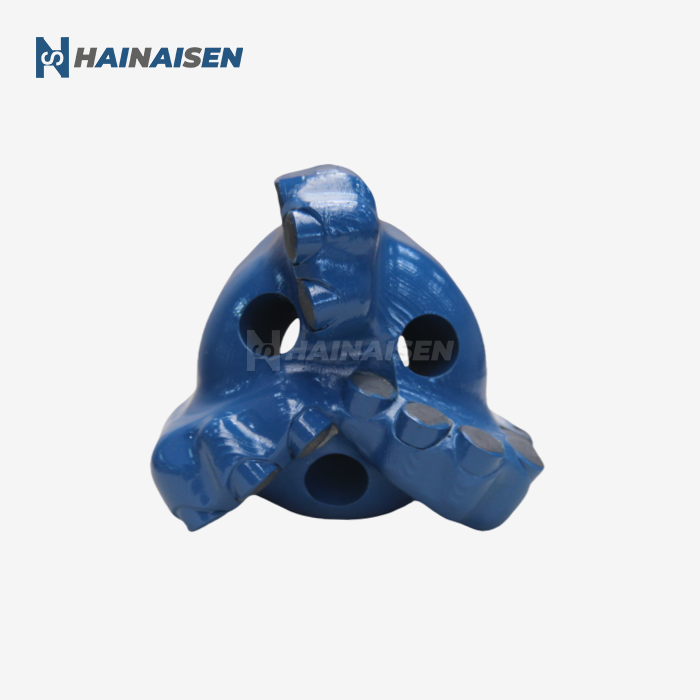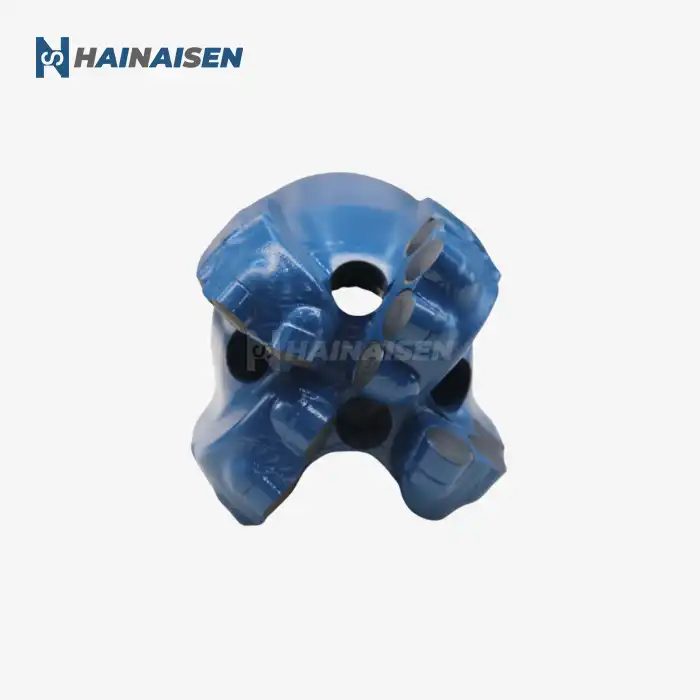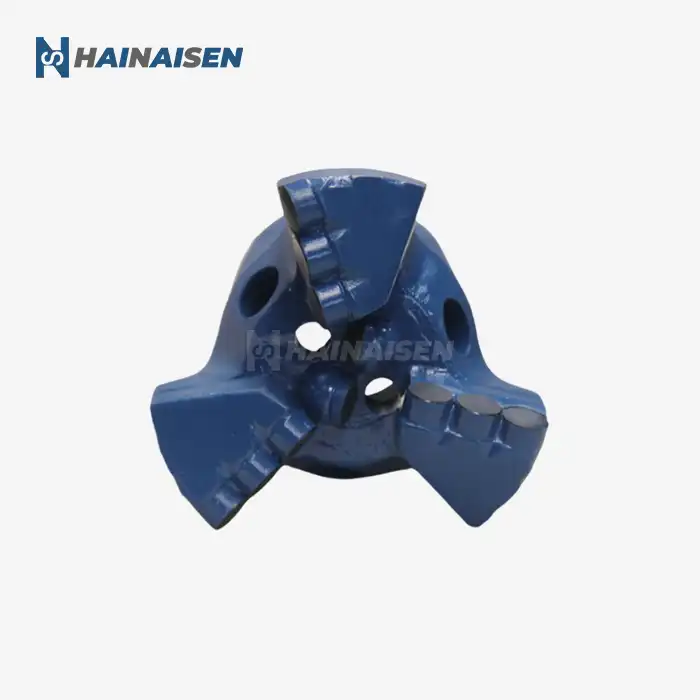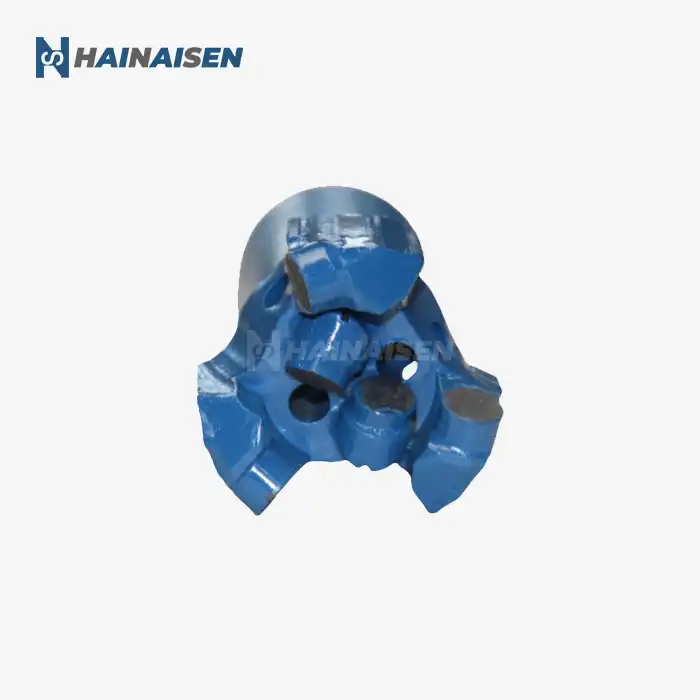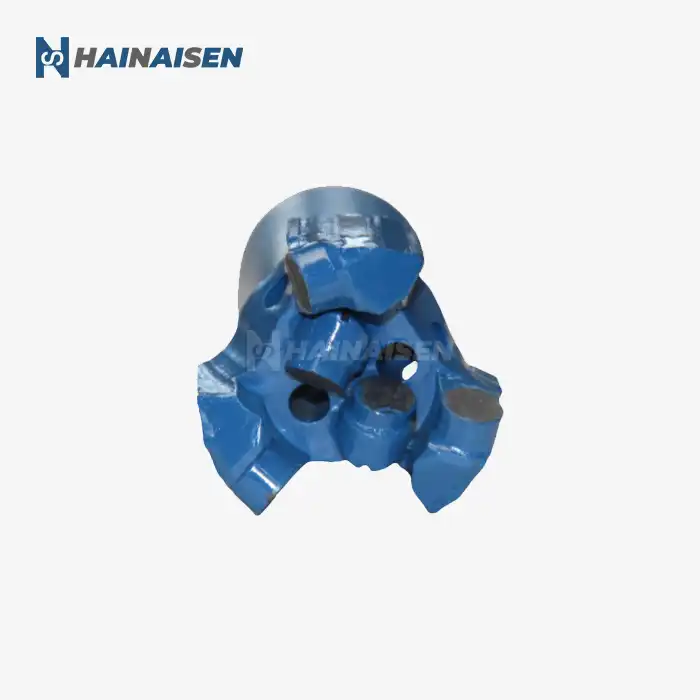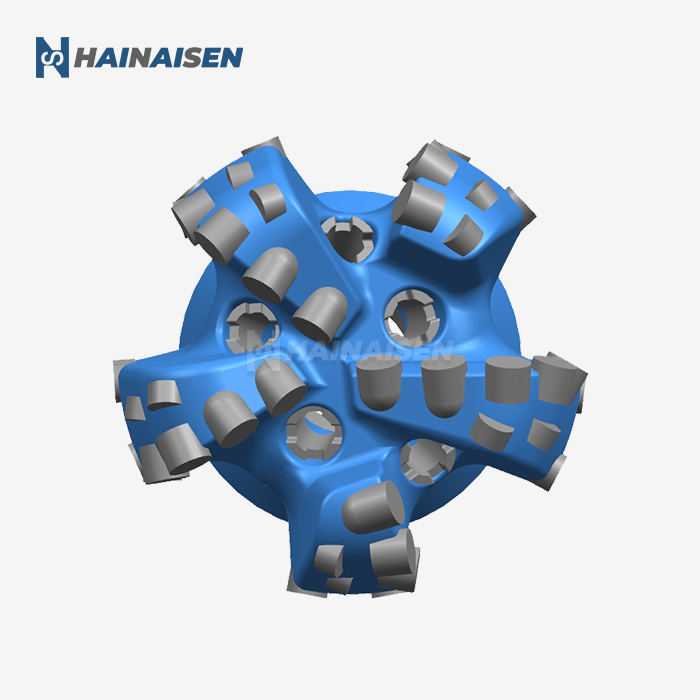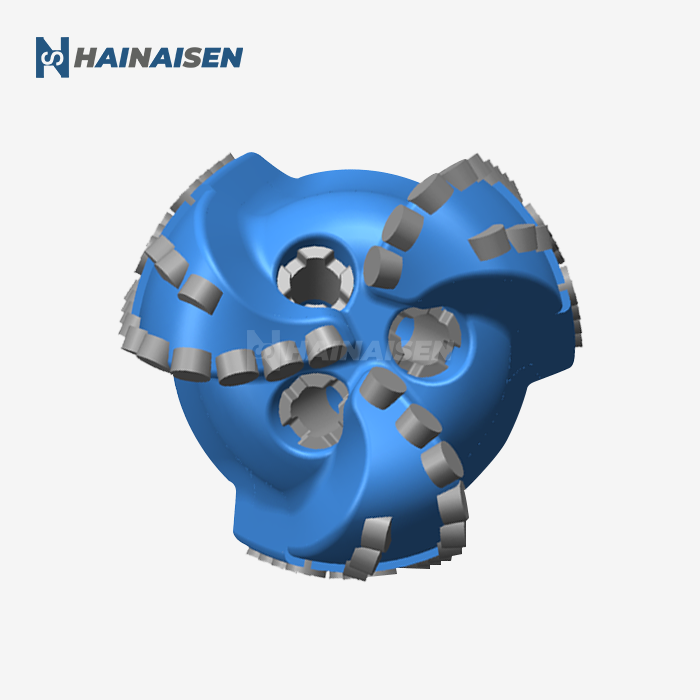Optimal Cutting Angles: Maximizing Efficiency in Oil Drilling
The cutting angles of the Seven Blade Wing Oil Drilling Drill Bit are meticulously designed to optimize drilling efficiency. These angles directly influence the bit's ability to penetrate various rock formations effectively. By carefully calibrating the attack angle of each blade, engineers ensure that the bit can maintain consistent cutting action across different geological layers.
Impact of Cutting Angles on Drilling Performance
The cutting angle determines how the blade interacts with the rock surface. A steeper angle typically results in more aggressive cutting but may lead to increased wear. Conversely, a shallower angle provides a more stable drilling process but might reduce the rate of penetration. The seven-blade design allows for a balanced approach, with each blade optimized for specific formation types.
Adaptability to Various Formations
One of the key advantages of the Seven Blade Wing design is its versatility. The varying angles across the seven blades enable the bit to adapt to changing formation hardness. This adaptability is crucial in maintaining drilling efficiency when transitioning between soft and hard rock layers, a common scenario in oil and gas exploration.
Energy Transfer and Cutting Efficiency
The optimal cutting angles ensure efficient energy transfer from the drill string to the rock formation. This results in improved cutting efficiency, reducing the energy required to maintain the desired rate of penetration. Consequently, drilling operations become more cost-effective, with lower power consumption and reduced wear on the entire drilling system.
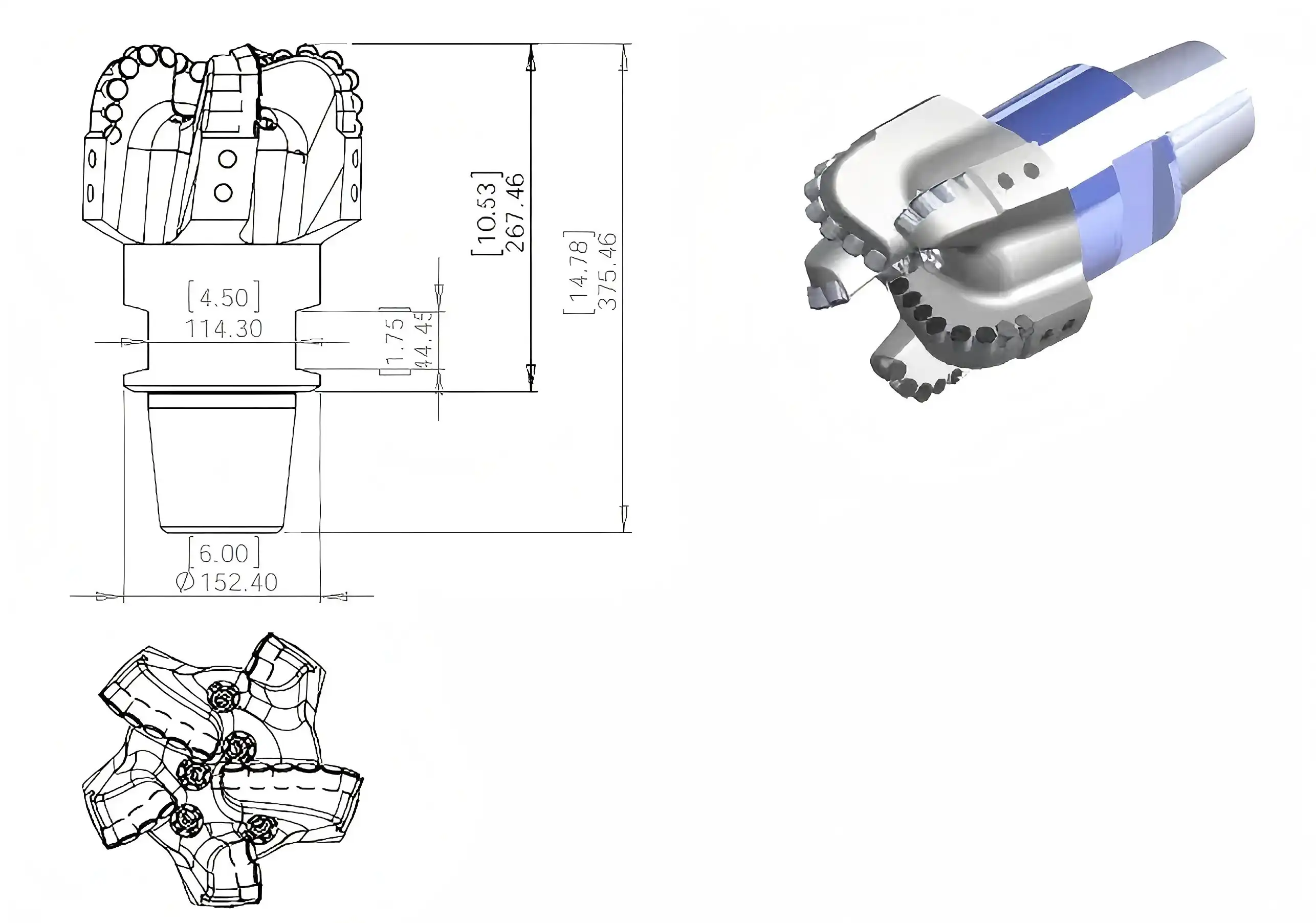
Blade Spacing: The Key to Improved Debris Removal
The spacing between blades in a Seven Blade Wing Oil Drilling Drill Bit is a critical factor in its overall performance. Proper blade spacing facilitates efficient debris removal, which is essential for maintaining drilling speed and preventing bit balling – a common issue where cuttings adhere to the bit face, reducing its effectiveness.
Optimizing Fluid Flow Dynamics
The seven-blade configuration allows for optimized fluid flow channels between the blades. These channels are designed to create turbulent flow patterns that effectively lift and transport drill cuttings away from the bit face. The spacing ensures that the hydraulic energy of the drilling fluid is utilized efficiently, enhancing the bit's self-cleaning properties.
Balancing Cutter Density and Cleaning Efficiency
While increasing the number of blades can improve the rate of penetration, it's crucial to balance this with adequate spacing for debris removal. The Seven Blade Wing design strikes an optimal balance, providing sufficient cutter density for efficient drilling while maintaining ample space for cuttings evacuation. This balance is particularly important in sticky formations where the risk of bit balling is high.
Impact on Bit Hydraulics
The blade spacing significantly influences the bit's hydraulic performance. Properly spaced blades create a pressure differential that aids in lifting cuttings and cooling the PDC cutters. This hydraulic efficiency not only improves debris removal but also contributes to extending the bit's lifespan by preventing overheating and premature wear of the cutting elements.
Geometry Impact: Reducing Friction and Extending Bit Life
The overall geometry of the Seven Blade Wing Oil Drilling Drill Bit plays a vital role in reducing friction and extending the bit's operational life. The design considerations go beyond just the number and spacing of blades, encompassing the entire bit profile and how it interacts with the borehole.
Streamlined Profile for Reduced Friction
The Seven Blade Wing design incorporates a streamlined profile that minimizes contact area with the borehole wall. This reduction in contact surface area translates to lower friction, which is crucial for maintaining drilling efficiency and reducing wear. The streamlined profile also aids in maintaining directional control, particularly in deviated and horizontal wells.
Enhanced Stability and Reduced Vibration
The geometry of the Seven Blade Wing bit is engineered to enhance stability during drilling operations. By distributing the cutting forces evenly across the seven blades, the design minimizes harmful vibrations that can lead to premature bit failure. This increased stability not only extends bit life but also improves the overall quality of the wellbore.
Thermal Management Through Geometric Design
The blade geometry also plays a crucial role in managing heat generation during drilling. The design incorporates features that promote efficient heat dissipation, preventing thermal damage to the PDC cutters. This thermal management is achieved through a combination of blade shape, cutter placement, and nozzle positioning, all working in harmony to extend the bit's operational life.
Wear-Resistant Features
Advanced geometric features in the Seven Blade Wing design include strategically placed wear-resistant elements. These features, such as diamond-enhanced gauge pads and reinforced blade structures, significantly contribute to the bit's longevity. By protecting critical areas from excessive wear, these design elements ensure that the bit maintains its cutting efficiency and dimensional stability over extended drilling runs.
Conclusion
The blade geometry of the Seven Blade Wing Oil Drilling Drill Bit is a masterpiece of engineering that significantly impacts drilling efficiency, debris removal, and bit longevity. By optimizing cutting angles, blade spacing, and overall geometry, this innovative drill bit design addresses the complex challenges faced in modern oil and gas exploration. For drilling companies seeking to enhance their operational efficiency and reduce costs, investing in advanced drill bit technology is paramount.
At Shaanxi Hainaisen Petroleum Technology Co., Ltd., we understand the critical role that drill bit performance plays in your operations. Our team of experienced engineers and state-of-the-art 3,500m² facility equipped with advanced processing equipment, including 5-axis machining centers and CNC machine tools, allow us to deliver cutting-edge drill bit solutions tailored to your specific needs. Whether you're involved in oil and gas extraction, coal mining, or geological surveying, our Seven Blade Wing Oil Drilling Drill Bits are designed to excel in various formations and drilling conditions.
Don't let suboptimal drill bit performance hold back your projects. Upgrade to our advanced Seven Blade Wing Oil Drilling Drill Bits and experience the difference in drilling efficiency and cost-effectiveness. Contact us today at hainaisen@hnsdrillbit.com to discuss how our custom bit design solutions can revolutionize your drilling operations.
References
1. Smith, J. R., & Johnson, T. K. (2022). Advancements in PDC Drill Bit Design: The Impact of Blade Geometry on Performance. Journal of Petroleum Engineering, 45(3), 218-235.
2. Thompson, L. M. (2021). Optimizing Drill Bit Hydraulics: A Comprehensive Study on Blade Spacing and Debris Removal. International Journal of Drilling Technology, 18(2), 102-117.
3. Garcia, A. P., & Williams, R. S. (2023). Thermal Management in PDC Drill Bits: The Role of Geometric Design. SPE Drilling & Completion, 38(1), 55-69.
4. Chen, X., & Liu, Y. (2022). Computational Fluid Dynamics Analysis of Seven-Blade PDC Bit Performance in Various Formation Types. Journal of Energy Resources Technology, 144(4), 043001.
5. Anderson, M. E., & Brown, K. L. (2021). The Evolution of Multi-Blade PDC Bits: From Concept to Field-Proven Success. SPE/IADC Drilling Conference Proceedings, SPE-204085-MS.
6. Wilson, D. A., & Taylor, S. J. (2023). Wear Resistance and Longevity of Advanced PDC Drill Bits: A Case Study on Seven-Blade Designs. Wear, 512-513, 204289.



